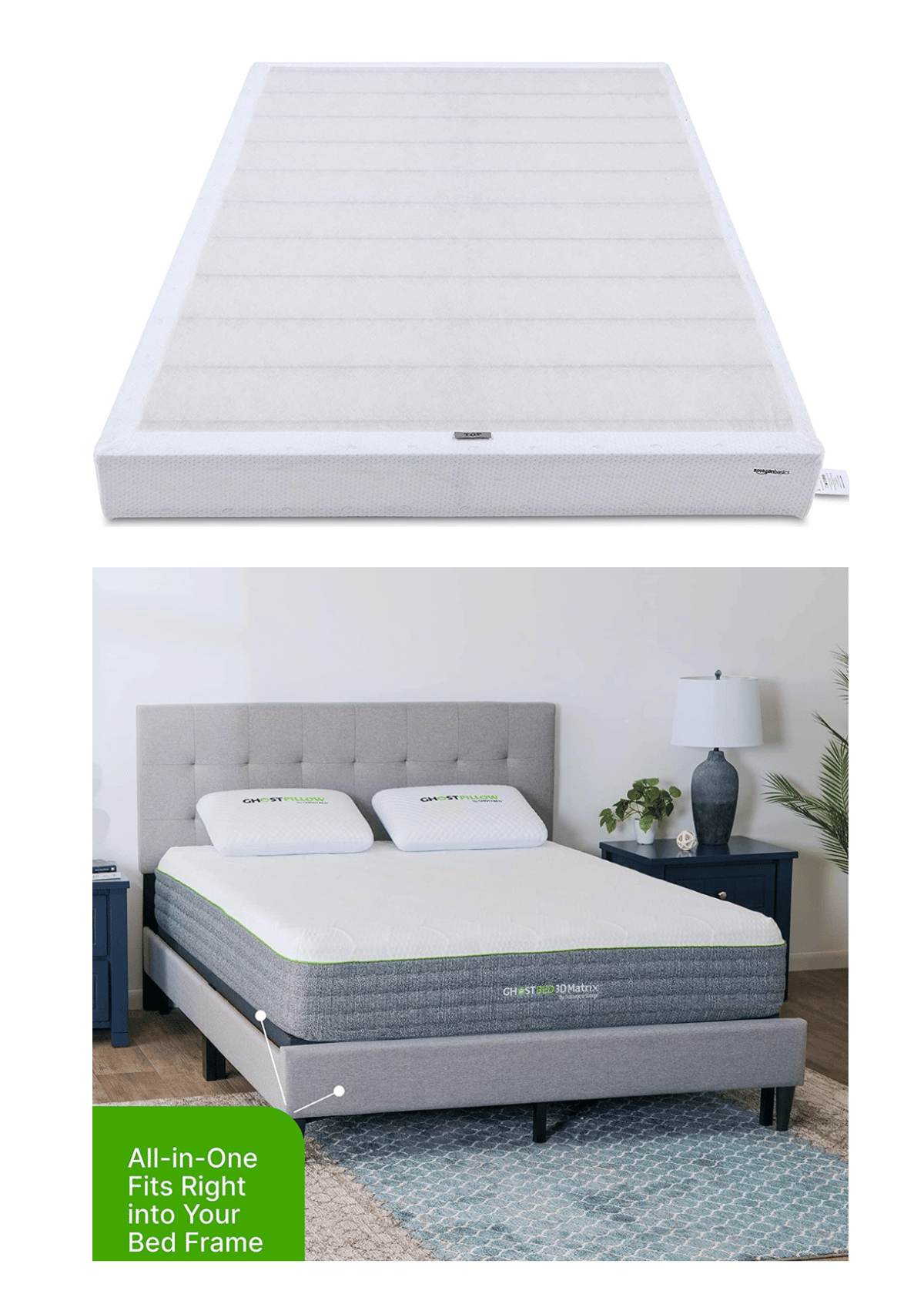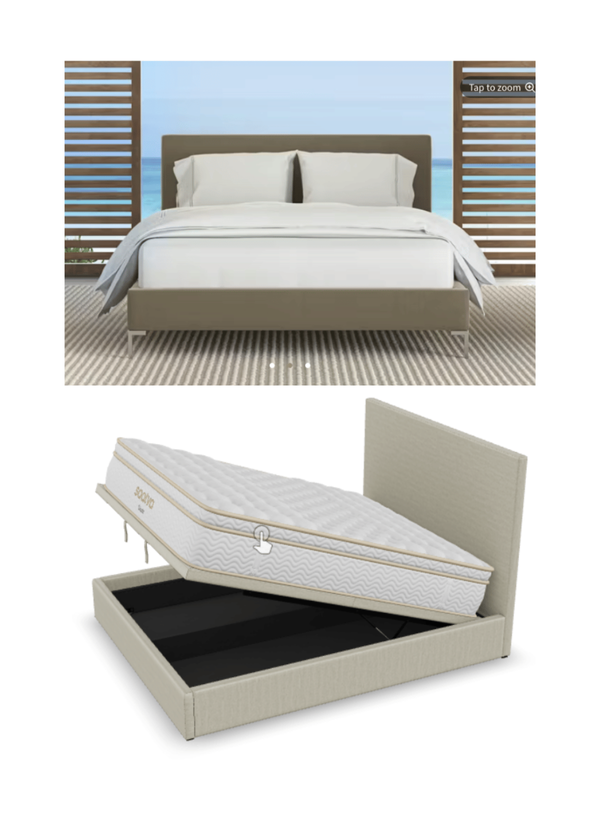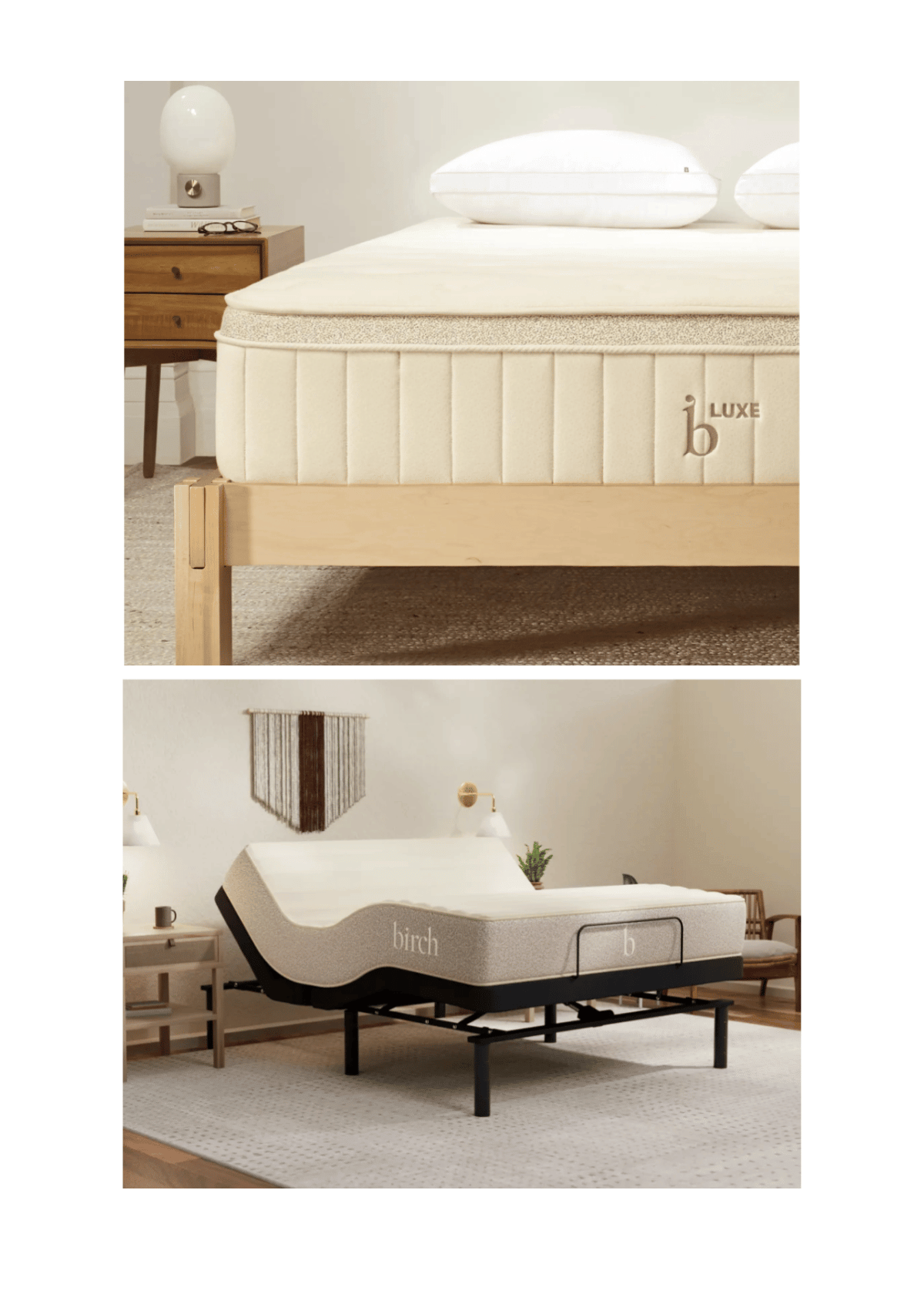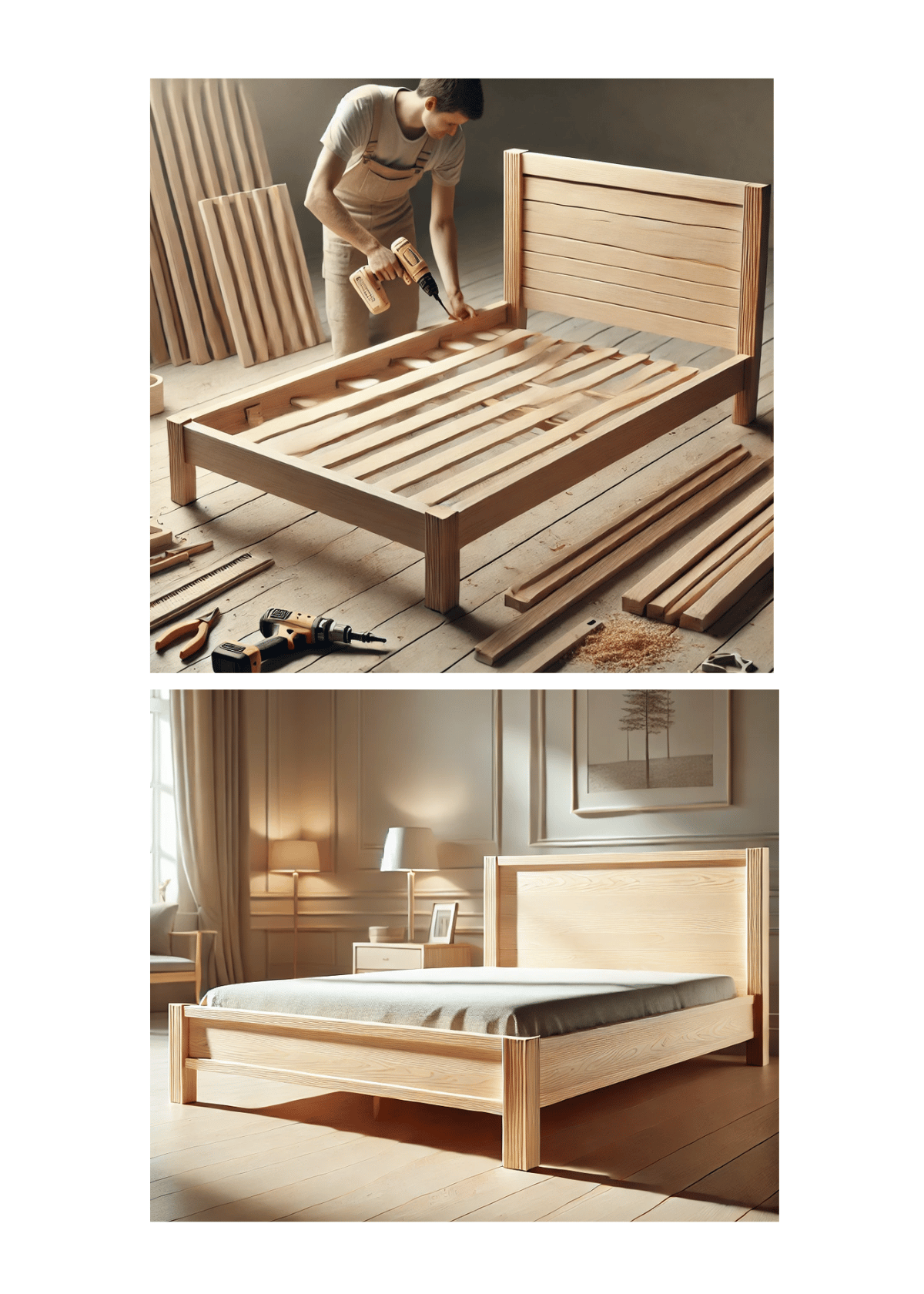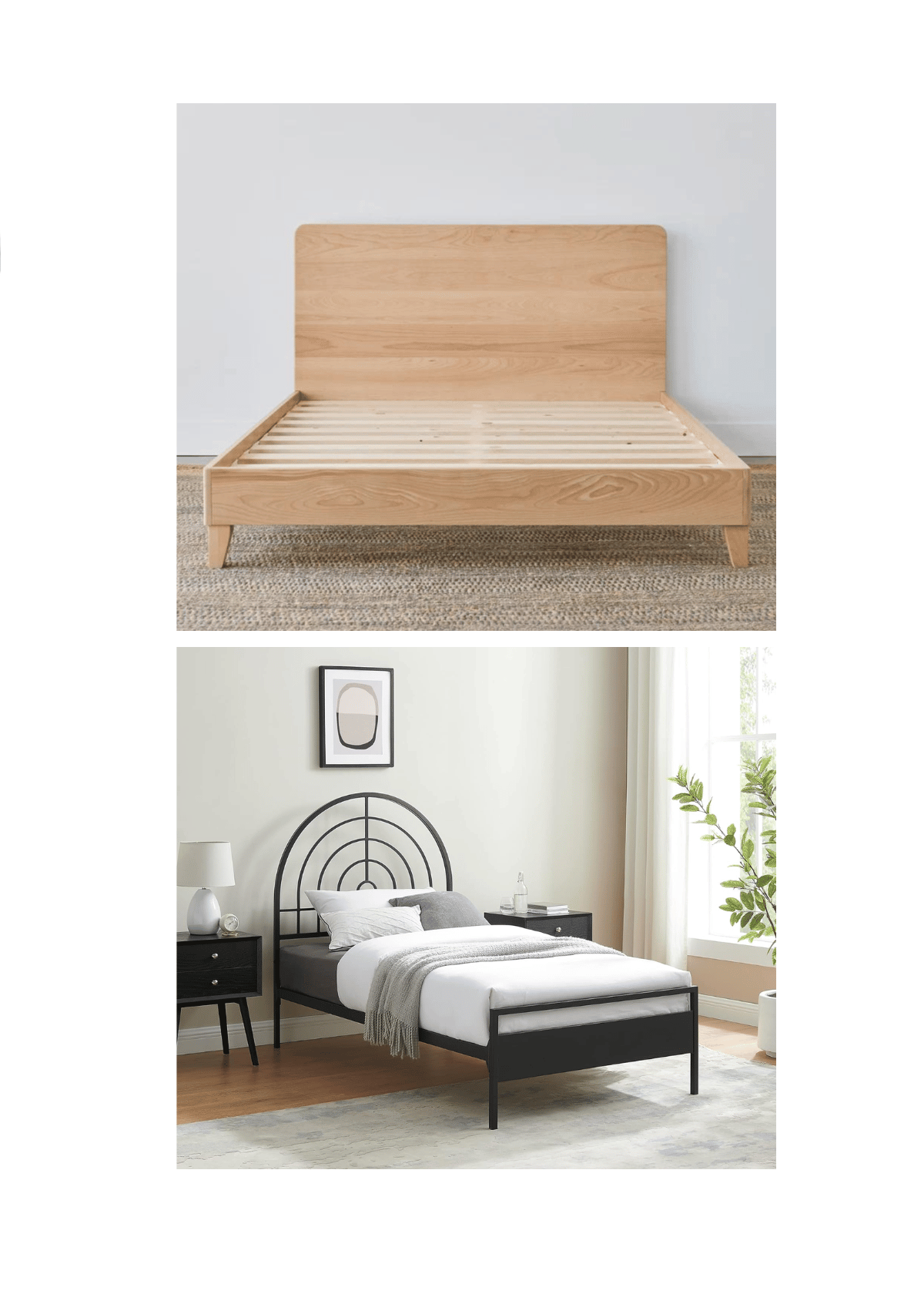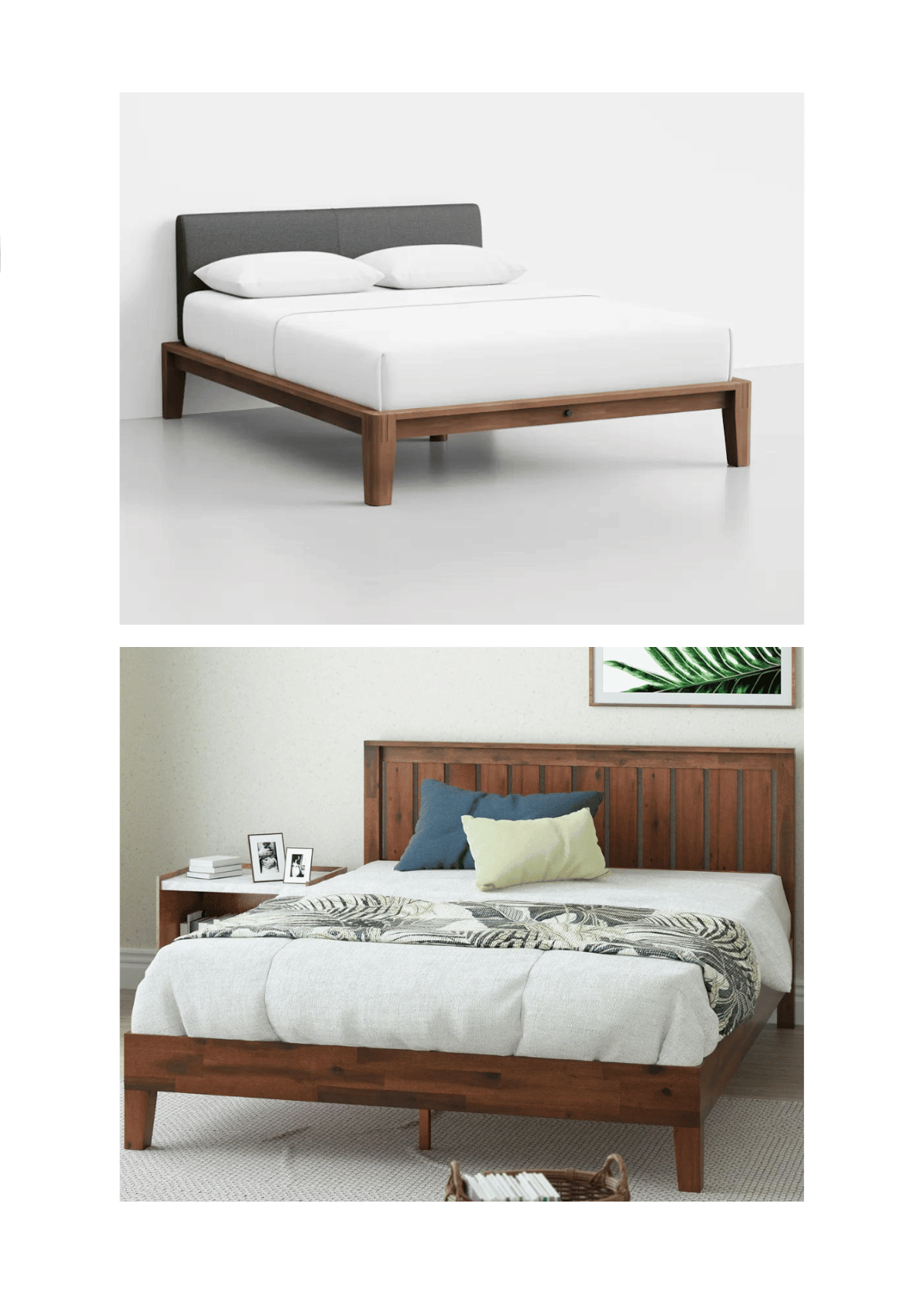(Last Update: 07/06/2025)
Are you wondering what the right mattress firmness is for optimal comfort?
I know that finding the perfect balance can be challenging. The firmness of your mattress greatly influences your sleep quality, health, and overall well-being.
In this guide, we'll explore how to determine the best level of firmness tailored to your unique needs, whether you prefer a softer or firmer feel.
Let's discover the mattress that will transform your sleep experience and improve your life.
Are you trying to know what's box spring is and whether you need one? Then, please read our blog post about them so you buy the perfect mattress.
The History of Box Springs
- The box spring was initially conceived in the 19th century when mattresses were filled with straw or horse hair.
- This unevenness led to the development of the box spring—a bed frame filled with evenly spaced steel coils designed to provide uniform support.
- The box spring remained a staple throughout the 20th century as mattresses evolved into more sophisticated and comfortable designs.
- Its construction is adapted to support heavier mattresses and accommodate different bed sizes.
- The traditional box spring has recently been challenged by memory foam beds and innovative frames and foundations, which offer alternatives that enhance comfort and support.
If you're considering a box spring, explore our Low Profile Box Springs Review for top picks.
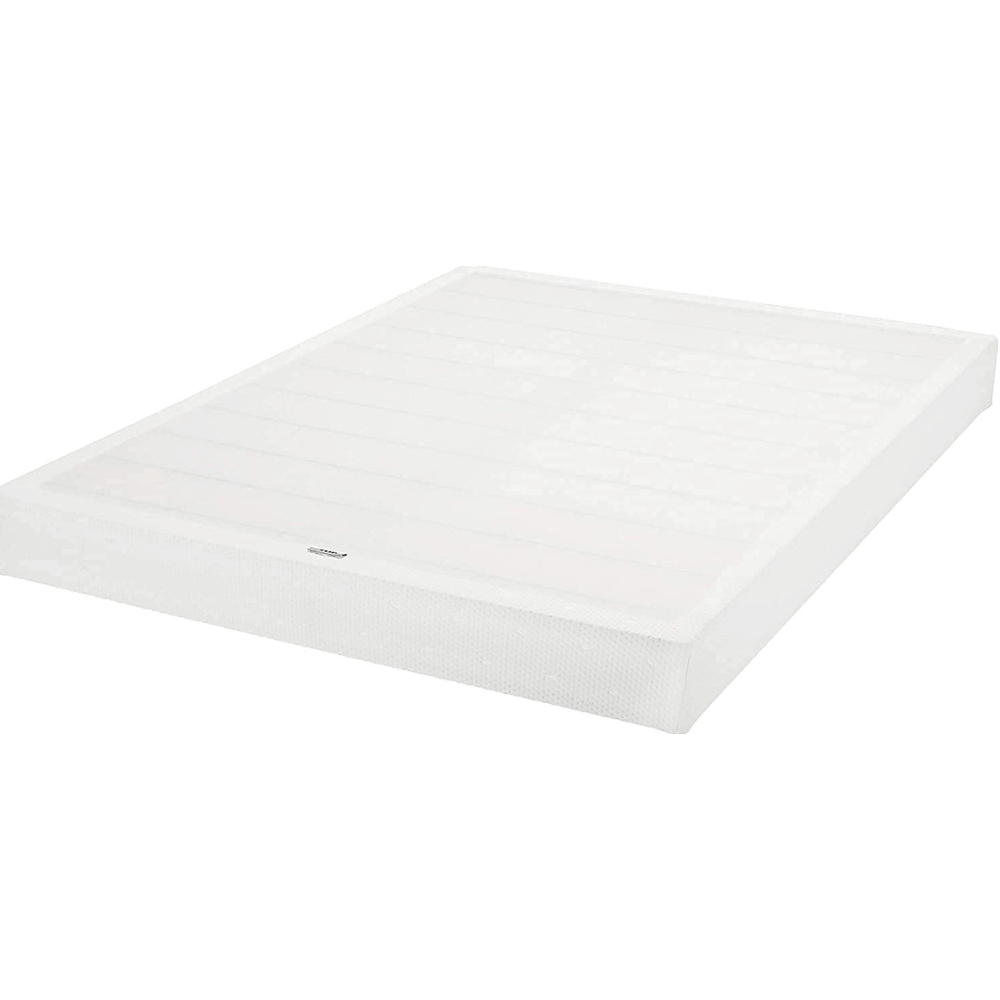
Understanding Box Springs: The Anatomy
- A box spring is more than just a simple box; it's a meticulously constructed supportive foundation designed to provide optimal support for the solid surface of your mattress. So, let's dive into the key components:
The Frame:
- The frame forms an extra layer around the box's skeleton. However, a metal bed frame has recently become common due to its durability and resistance to wear and tear.
Platform beds can be a sleek alternative to box springs—explore the best styles for every room.
The Springs:
- The heart of any spring is its springs or coils. Like in some beds, steel coils inside these box springs and foundations are evenly spaced throughout the platform bed frame's interior.
The Cover:
- A protective, breathable fabric encases the bed frame, support box springs, and foundations.
This cover is usually made of heavy-duty material that prevents dust and debris from penetrating the spring's interior. It also gives the firmer support box spring a neat and finished appearance.

The Role of a Box Spring
Supporting the Mattress:
- The primary function of a box spring is to provide a solid and flat foundation for the mattress.
- The springs or coils within absorb and distribute the weight of the mattress and sleepers evenly, reducing wear and tear and helping maintain the mattress's shape and integrity.
Certified mattress components—whether in box springs or platforms—ensure safer sleep. Learn more about mattress certifications and their benefits.
Increasing the Lifespan of Your Mattress:
- A box with actual springs can help extend the lifespan of a mattress by mitigating stress and strain on it to help with pressure points.
- Explore how mattress foundations like box springs directly influence your posture, comfort, and overall sleep quality and health.

Types of Box Springs
Box Spring in Innerspring Mattresses:
- A standard box spring typically measures around 9 inches in height. It's designed to offer plenty of support and elevate a mattress significantly off the ground.
Split Box Spring:
- A split box spring comes in two halves. This type is perfect for those who need to move their traditional box springs through tight spaces, like narrow staircases or doorways.
- They also benefit from larger beds with the same support and height but ht but with easier maneuverability.
- Always double-check dimensions and product specifications before purchasing a box spring. Online listings occasionally include malformed data, leading to incorrect sizing or compatibility issues with your mattress.
If you're not using a box spring, consider a platform bed with proper mattress support to maintain durability and performance.
Box Spring Alternatives
Box Springs vs. Platform Bed:
- Platform beds offer low-profile support with wood or metal slats
- Ideal for all mattress types, no box spring needed
Box Spring vs. Low-Profile Box Spring:
- Standard springs add height, great for thinner mattresses
- Low-profile springs offer same support with lower bed height
A Bed with Box Spring vs. metal frame
- Box springs add bounce, suit traditional setups
- Metal frames like Zinus SmartBase offer firm support, easy assembly
- Purple frames praised for durability and convenience
Box Spring vs. Foundation: What's the Difference?
- Box Spring vs. Foundation: Although springs and foundations are interchangeably compatible, they are different. There are key differences between springs and foundations, spring vs. foundation here.
Box springs were initially designed to contain real springs inside the wooden frame.
Box Springs vs. Adjustable Beds:
Springs provide sturdy, static support and add height to mattresses.
On the other hand, an adjustable base offers dynamic support that can alter your bed's position.
When reading product descriptions, pay attention to the use of a certain word like “universal” or “compatible,” as it can indicate whether the box spring will work with your mattress type.

Do You Need a Box Spring?
- Foam, latex, and hybrid mattresses work best on solid or slatted foundations
- Innerspring mattresses may benefit from a box spring's bounce and shock absorption
- Platform beds usually don’t require a box spring
- Saatva mattresses fit various frames but recommend a solid, flat surface—box spring, foundation, or platform—for proper support and durability
Memory foam mattress impacts the choice of a box spring.
- A foam bed can impact the choice of a box spring. Memory foam mattresses are heavier and more conforming than traditional mattresses, so they require a box spring that can provide adequate support.
A box spring with too far apart slats can cause a foam mattress to sag.
When pressure is applied to the mattress, small responsive movements are triggered in the box spring coils to minimize impact and prolong mattress lifespan.
Proper support starts with a reliable foundation—get expert tips from this bed frame assembly guide.
Pros and Cons of Box Springs
'
Pros:
- Provides strong support and helps prevent mattress sagging
- Adds height, making it easier to get in and out of bed
- Absorbs shock, reducing wear on the mattress
Cons:
- Adds extra cost when buying a new bed
- Not suitable for memory foam or latex mattresses
How to Choose the Right Box Spring
- Size and Fit: Ensure the box spring is the same size as your bed frame and mattress size. Misalignment can lead to discomfort and damage to your bed base and mattress.
- Quality and Construction: Look for a full mattress warranty, a sturdy frame, resilient springs, and a breathable fabric cover. A poorly constructed box may sag over time.
- Price and Budget: Consider your budget. While a good box bed can extend the life of your mattress types, it doesn't have to break the bank. Balance the cost with the quality and benefits it offers.
A box spring supports the mattress by enabling several actions—absorbing shock, distributing weight evenly, and reducing motion transfer between sleepers.
Here is a general guideline for choosing a box spring based on the firmness of your mattress:
- Soft mattress: Choose a medium to firm box spring.
- Medium mattress: Choose a medium box spring.
- Firm mattress: Choose a soft to medium box spring.
Conclusion
In conclusion, finding the right mattress firmness is essential for optimal comfort and sleep quality.
It can be overwhelming, but understanding your unique needs and preferences makes a significant difference.
Whether you need a softer mattress for pressure relief or a firmer one for support, the key is to listen to your body.
Remember, your perfect mattress should enhance your sleep, improve your health, and provide lasting comfort. Invest wisely, and you’ll enjoy restful nights and refreshed mornings.
Inaccurate product specs or malformed data on compatibility can lead to poor mattress pairing and reduced sleep quality.
Box spring compatibility also depends on mattress size—use this mattress size and dimension chart to get the right fit.
FAQs
Are you supposed to use a box spring with memory foam mattresses?
The mattress should not provide cushioning for sleeping. A mattress's spring can also affect foam, latex, or both. So, instead, the mattress made of memory foam or latex should be laid on a sturdy foundation with no springs or hinges.
What is the Casper Foundation?
This Casper base was designed to offer sturdy support and excellent bed comfort. It can also be adapted to other beds that use conventional Box Springs and foundations, serves well with sturdy hardwood, and is rigorously tested for durability.
Would you like a boxspring with a bed frame?
Most mattresses do not need box springs but often require separate bed frame support. Typically, you'll need a box spring to complete a simple wooden or metal frame, which may come with wooden or metal slats.

